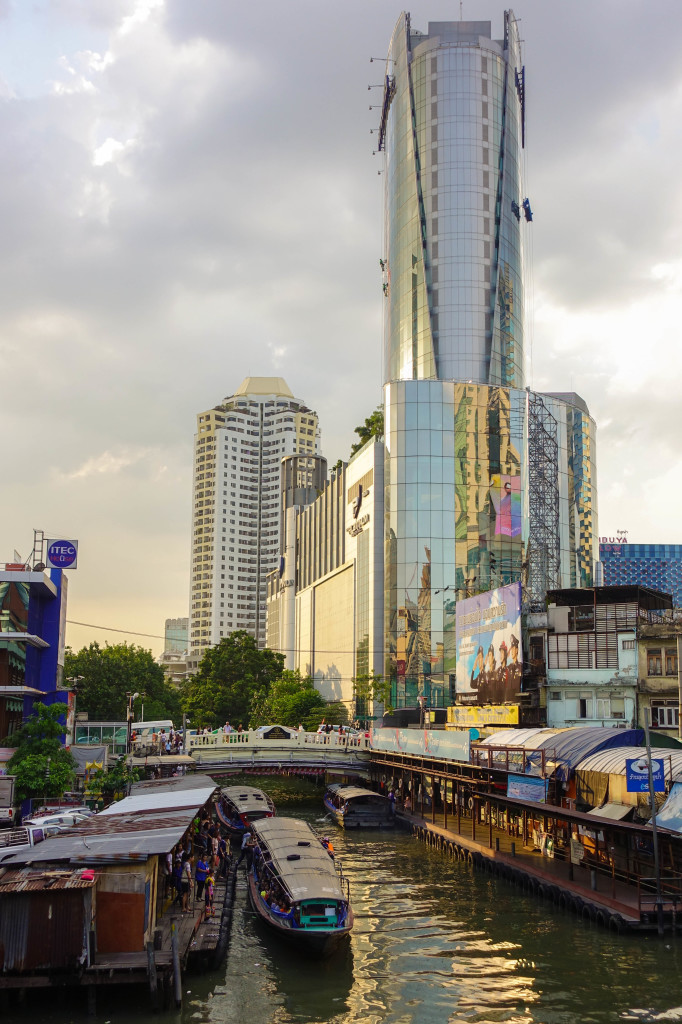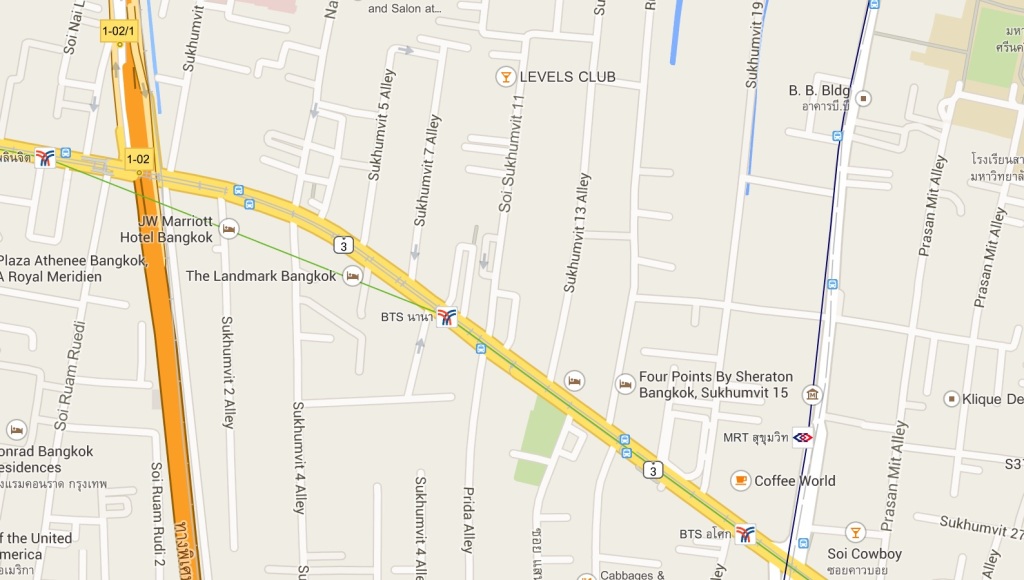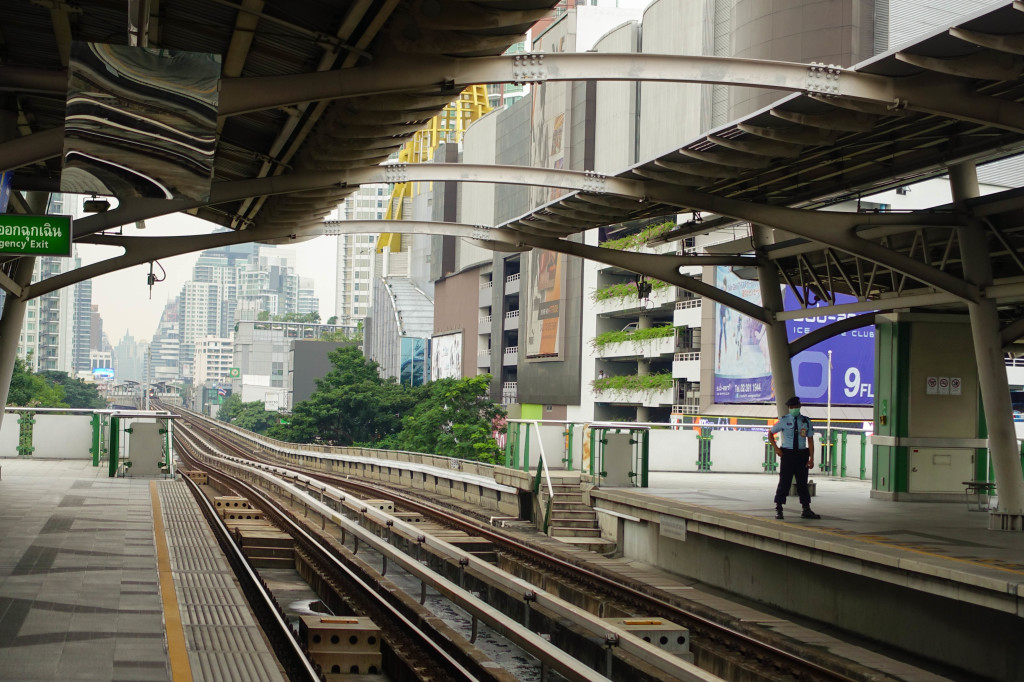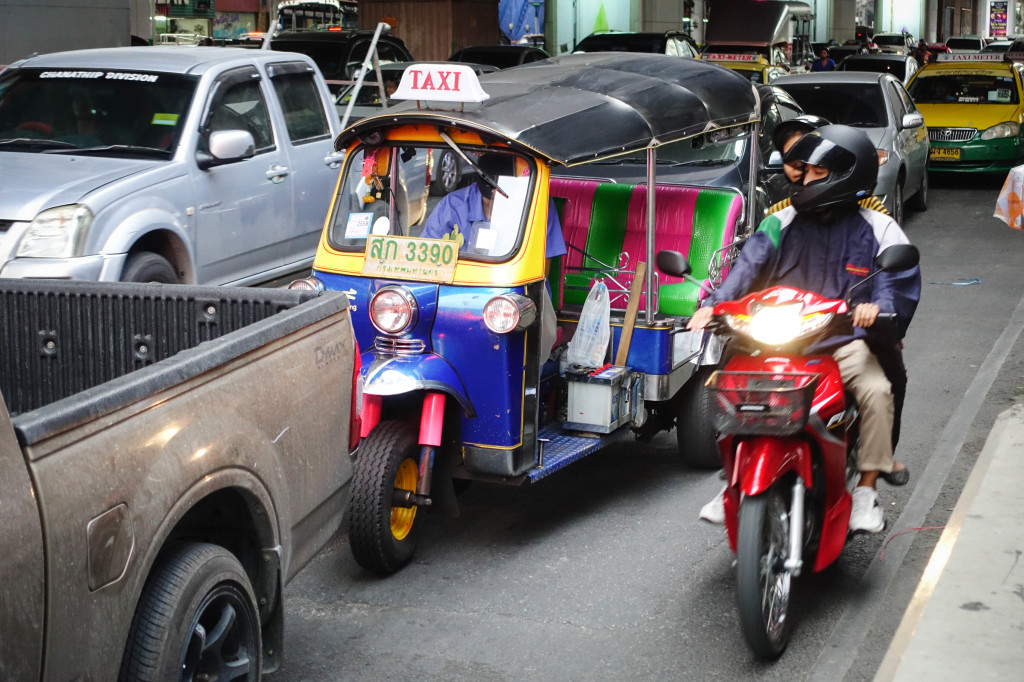Bangkok is a huge, sprawling metropolis. Many people who visit find it quite intimidating at first. Fortunately, once you get the hang of how the city works, it becomes a lot easier to get around. Hopefully, this post will help you the next time you decide to set foot in the city of the East where money really can buy pretty much anything.
Things are further away than they appear
If you think something might be nearby, you’re probably wrong. If you see it on Google Maps and it looks like it might just be close enough to walk to, you’ll probably be drenched in sweat and thoroughly dehydrated by the time you get there. Everything is further away than you think it is, and you should probably call a cab or tuk tuk.
Get cellular data access
Having access to data on your cell phone is a huge help, especially for navigation or finding something. You can usually find a SIM card in Bangkok for your phone, and I was able to get one month of unlimited 3G data for only $15 with the cell phone carrier True. Just stop by one of the malls or find a True store.
A lot of 7eleven stores carry SIM cards as well, but if you have a phone that uses a Nano SIM (such as the iPhone 5 and later), then you’ll need to have the SIM card cut, which 7eleven will not do. Thus, it’s easier to just find a kiosk somewhere and let them know beforehand what type of SIM card your phone uses.
How Bangkok is designed
At first, Bangkok seems like a confusing mishmash of roads, alleys, and streets, and the heavy smog and chaos on the streets does not seem to help. However, the heart of Bangkok is actually designed in a relatively easy-to-understand way, so once you figure this out, you can get to places and give directions easier.
There are a number of large main roads in Bangkok, such as Sukhumvit and Phetchaburi. Off of these main roads are a number of alleys, or sois. To the north are odd-numbered sois, and to the south are even-numbered sois. If you wanted to go to Levels club in Bangkok, you’d find it on your Maps app, and then you can tell the taxi driver “Soi Sukhumvit 11” or just “Sukhumvit 11” and they’ll know where to go. In almost every case, taxi drivers only speak very basic English, and they also generally are not familiar maps of Bangkok, so the best way to get to your destination is to tell them the alley off of the main street.
The even and odd sois generally do not line up. For example, crossing from the north side of Sukhumvit Road at Sukhumvit 53 will take you to the south side at Sukhumvit 36.
Different types of transportation
There are a number of different types of transportation available in Bangkok, both public and private. Private transportation consists of taxis, tuk tuks (three-wheeled motorcycles with a rear open-air cabin for passengers), motorcycles (you sit in the rear and only fits one person; generally used only by locals). On the other hand, choices for public transportation is comprised of the BTS skytrain, MRT subway, buses, and water buses.
Taxi
Make sure the driver turns on the meter. Tell them to turn it on after telling them where to go (using tips from the “How Bangkok is designed” section above). If they refuse to turn on the meter, get another cab. There are always plenty.
Tuk Tuk
No one really uses these to get around except tourists. Still, they’re a fun, unique way to experience the city. Be warned that there’s no air conditioning and always haggle on the price.
BTS Skytrain
Above the standstill traffic of the city below, the BTS Skytrain races from station to station. The Skytrain is a great way to get around the city, and it comes often. However, while the Skytrain does serve major parts of the city, it does not serve all parts, and there is also a relatively large distance between each station. Another downfall is that, although the trains themselves are air-conditioned, the stations are not. Each station is two large flights of stairs up to the top, with only a few of the highest-traffic stations having escalators. If you have a lot of luggage, you probably will not want to use the Skytrain.
The Skytrain map shows the stations that are around and the cost in baht to get to each station in various tiers (15, 18, 23, 42, etc.). You use this information to pay at the machine, which will vend a single-use ticket. Unfortunately, the machines only take coins, so if you have bills, you’ll need to go to the change window attendant and get coins.
MRT Subway
The MRT is the subway system in Bangkok, and it serves another part of the city, with a few stations that intersect the Skytrain. The system is better than the Skytrain, in that it uses a digital display where you can select which station you want to go to. Additionally, the MRT takes bills up to 100 baht.
Buses and Water Buses
The bus system is enormously confusing, but will take you to where you want to go. Ask your hotel or hostel front desk about which buses to take to get to where. There are two types of buses, AC (air-conditioned) buses and non-AC buses. The name is pretty self-explanatory. AC buses are a little more expensive than non-AC buses (something like 12 baht vs 7 baht), but they’re totally worth it. Water buses are around 12 baht as well.
When riding the bus for the first time, it’s a bit confusing because there’s no place to pay when you get on, and nothing at a bus stop that resembles a pay station. That’s because there’s a person on the bus/water bus (not the driver) that will come around and collect bus fares after you get on. Just board the vehicle, take a seat, and someone will come around and get the fare from you.
Look both ways before crossing the street
Thailand is a left-driving country. For all of you folks from the UK and other left-driving countries, you’re still not in the clear. Everyone, and I mean EVERYONE, needs to look BOTH ways before crossing streets. Traffic laws in Bangkok are more of a suggestion than anything, and motorcycles are the worst offenders. They will weave in and out of traffic, drive on the wrong side of the road, drive on sidewalks, and much, much more. Look both ways before crossing the street.



